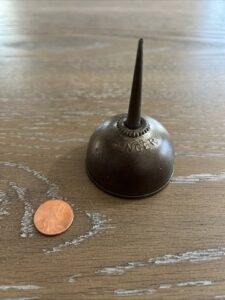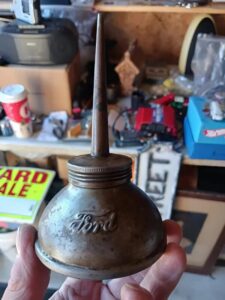Here’s an item that younger folks are likely to stare at with wide, puzzled eyes like, “What the heck is this weird thing?!”
But back in the day, this little gadget had its moment of glory—big time .
So go ahead, get comfy ️, and let me tell you the story in the first comment .

It’s a relic from the past, and only those with a bit of experience under their belt will recognize it!
This is the kind of object that younger generations might look at and go, “What’s this strange thing even for?!” But believe it or not, this thing was once essential—and not just a little bit. So sit back, and let me explain.
What you’re looking at is a metal oil can, a vintage little gem that was used to lubricate mechanical parts. But not just any oil can—this one is branded Ford, no less. Yep, it dates back to the days when cars like the Ford Model T were just hitting the streets.
Back then, maintaining your car wasn’t optional—you had to do it yourself. No quick-service garages, no dashboard warning lights to remind you about an oil change—nothing. You had your oil can, a rag, and a bit of common sense.

The shape? It’s not just for show. The long, thin spout was designed to reach the hidden corners of an engine or machine. You’d squeeze the soft metal base, and bam, a perfect drop of oil right where it was needed. It was the go-to tool for mechanics, factory workers, and all the handy folks who knew that a well-oiled machine runs like a charm.
But this oil can isn’t just a tool—it’s a symbol. A symbol of a time when things were repaired, when every tool had value, and when oil was pretty much the lifeblood of machines. It speaks of greasy workshops, blackened hands, and know-how passed down through generations.
Today, it might be lying around in an old garage, a bit rusty, but still full of character. Because it’s been held by skilled hands, it has saved engines, and it deserves to be remembered.





